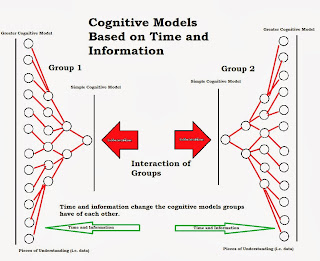Most people who have been in the working world for
sometime have come across a situation where a single person uses power and
authority with a dominating communication style to push their will on a
corporate board, team, or workplace. Research by Tost, et. al (2013) discusses
some of the pitfalls of doing so and the eventual decline of team performance.
As performance declines so does the ability of organizations to generate income
through collaborative effort and idea generation.
Politicized workplaces are stressful and generally
unproductive. According to Eisenhardt and Bourgeois (1988), when there is power
inequality within the workplace political conflict rises and team performance
declines. Teams should be well balanced to ensure that there is equity of power
and the ability to discuss concepts openly for better idea generation.
Power should be used to help push good ideas through
to create greater productivity. However, when power is used to diminish the
brainstorming process the best ideas do not come forward. There is a natural
propensity for people to defer all major decisions to those that have the
formal power. We all know that those that have the formal power do not always
know the right answers or have failed to grasp alternative positions. Power,
Leadership and Formal Authority can be summed up as follows:
Power:
The ability of a person to control outcomes, how people perceive expenses, or
push people in certain behaviors (Keltner, et. al, 2003).
Leadership:
The ability to influence others to work toward group objectives and goals
(Bass, 2008).
Formal
Authority: Holding a position that that allows for a specific
role within social hierarchy (Peabody, 1962).
Power, leadership, and formal authority maintain the
ability to influence the outcomes of the group’s decisions. There are times
when this can be beneficial once a final decision has been made and concise
action is needed. However, preempting or cutting short the decision process may
end up costing the organization later in terms of strategic outcomes as well as
future willingness of employees to express themselves fully.
Open communication within teams is essential in determining
of the team’s performance (Dionne et. al, 2004). Freethinking employees are more likely to make novel solutions. Strategic
decisions require the ability to perceive and understand various
outcomes. As thoughts build on each other, open communication affords a better
brain storming session.
The authors conclude that the formalization of power
into the hand of an individual limits the overall team performance. The leader’s
subjective perspectives of power leads them to seek additional power derailing
the performance process. The more power a leader feels the more their behavior
changes and the more people defer to their power. Followers must willingly give
up the power for the leader to gain additional influence.
The research is important for avoiding the concepts
of “group think” which limits a team’s performance. As leaders become more
engrained in the perception of their power gain, the more their behavior prompts
team members to give up the authority. The end result of such power deference is
poor decisions, poor consequences, and potentially disastrous results. Even
though it is possible for a single person to break the cycle by asking the
right questions the social structure may try and force adherence leading to a
lack of empowerment and performance for the whole group.
Bass, B. M. 2008. The Bass handbook of leadership: Theory,
research, and managerial applications. New York: Free Press.
Dionne, et. al (2004).
Transformational leadership and team performance. Journal of Organizational Management, 17: 177–194.
Eisenhardt, K. & Bourgeois, L. (1988). Strategic decision
making in high-velocity environments: Toward a midrange theory. Academy of Management Journal, 31:
737–770.
Keltner, et. al. (2003). Power,
approach, and inhibition. Psychological
Review, 110: 265–284.
Peabody, R. (1962). Perceptions
of organizational authority: A comparative analysis. Administrative Science Quarterly, 6: 463–482.
Tost, et. al. (2013). When power makes others
speechless: the negative impact of leader power on team performance. Academy of Management Journal, 56 (5).
